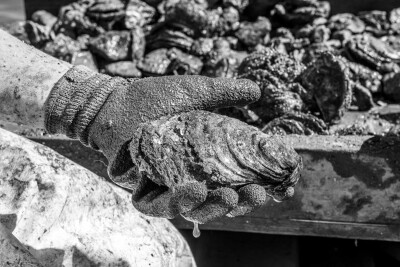Seattle’s Pacific Marine Expo kicked off without a hitch on day one, thanks to the planning and teamwork of the numerous teams involved with the show. Part of that effort was found both on the show floor and on the concourse level, where industry, government and non-profits focused on the common goal of safety and prevention for commercial fishermen.
Safety 101 is a new series of 20-minute breakout sessions on the show floor (next to the National Fisherman booth, 755). These hands-on workshops are giving participants access to experts and a chance to tailor questions and more importantly find solutions for their boats and crew.
Matt Lasley, an operations manager for Compass Courses and an expert in the field of safety. Having spent nearly 25 years with the Coast Guard, he recently found his second career teaching safety at the Edmunds-based company. While some attendees learned about hypothermia blankets for the first time, another group from Vancouver tested his knowledge on how to improve their fleet’s onboard life-saving equipment.
The National Institute for Occupational Safety and Health seminar reaffirmed that commercial fishing ranks among the most dangerous jobs in the country. The good news, presented with data regarding Alaska and the Pacific Northwest, is that fatality rates have been dropping for the past 15 years.
“The only great fatality rate is zero,” said Samantha Case, an epidemiologist at NIOSH. Two Alaskan fleets, the Bering Sea crab and halibut/blackcod longliners reported zero fatalities between 2010 and 2014, but “we have more work to do to help commercial fisherman be safe,” said Case.
During the Q&A session that followed, the audience asked about injuries aboard much smaller boats, in particular, setnetters. NIOSH reps acknowledged that as setnetting has seen new entrants during the past 10 years, setnetters are a group that needs to be looked at more closely to determine patterns. However, during 2014-15, 15 fatalities resulted from capsizes, and 10 of those were in skiffs.
The Seattle Fishermen’s Memorial (booth 547) emphasized a rebate program to assist qualifying vessels in obtaining a capstan winch emergency stop (e-stop). As one of the most dangerous pieces of gear on deck, e-stops integrated into capstans can reduce entanglement into nets or machinery.
The Sea Gem, the first boat under the program, had work completed in time for her trip out to the grounds this year. Other boats are in the process of adapting the e-stops into their capstans, and the group hopes to get the word out about the program to all Seattle-area boats.







